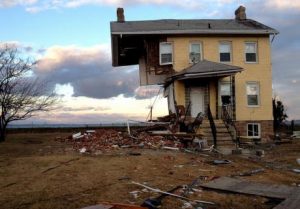
Federal and State programs for Veterans spur homebuying demand for young active-service military members
Researchers were suprised by their findings in the first-ever 2016 Veterans & Active Military Home Buyers and Sellers Profile, which evaluates the differences of recent active-service and veteran home buyers and sellers compared to those who’ve never served. Differences in household demographics and affordable financing options spur homebuying demand for young active-service military members, causing them to significantly outpace the share of non-military homebuyers under the age of 35.
The results revealed quite a few contrasts between active-service military buyers and buyers who’ve never served. At a median age of 34 years old, the typical active-service buyer was a lot younger than non-military buyers (40 years old) and was more likely to be married and have multiple children living in their household. As a result, they typically bought a larger home that cost more than those purchased by both non-military buyers and veterans.
Financing A Home
Despite having a lower median income ($76,800), more stable job security and no down payment financing options give aspiring homeowners in the military a deserving advantage over their civilian peers. 51% of young active-service military persons (age 18-35) own homes, as opposed to 34% of civilians.
Veterans Affairs loans – which offer over 100 percent financing for veteran and active-service homebuyers – were the most popular loan type for active-service and veteran buyers. The majority of active-service buyers are financing their entire home purchase, and veterans are putting down a median down payment of 5 percent. For non-military buyers, the median down payment is 11 percent.
Studies show that VA loans perform remarkably well, encouraging lenders to continue to offer these programs to veterans and military personnel. With the ability to obtain a VA loan, only 5% of veterans and 3% of active-service buyers said saving for a down payment was the most difficult step. Of those, only 4% of veterans and 13% of active-service buyers said student loan debt delayed saving. While a larger share of active-service military buyers had student loan debt compared to non-military buyers and veterans, their debt balances were typically lower.
Active-service buyers prefer large single-family homes
The median income of veteran and active-service member homebuyers in the survey was $86,500, slightly lower than the average for non-military buyers. Active-service buyers typically bought a 2,170-square-foot home that cost more than those purchased by non-military buyers and veterans.
Mirroring the general population of buyers, over 80% of both veterans and active-service buyers purchased a single-family home, with those currently serving purchasing single-family homes at the highest rate.
The primary reason for home purchase for active-service military persons was job relocation, followed closely by the desire to own a home of their own. Compared to non-military buyers, veterans were more likely to want to be closer to friends and family or moving for retirement.
Choosing Where To Live
Veterans and active-service buyers purchased a home a lot further away from their previous residence (at 75 miles and 28 miles, respectively) than buyers who never served in the military (10 miles). Among the biggest factors influencing neighborhood choice, veterans were most influenced by the quality of the neighborhood, while convenience to their job was desired the most by active-service members.
Selling A Home
Some of the characteristics of active-service sellers differed from non-military sellers. They were younger, far more likely to have multiple children living in their household and sold a home in a suburban area at a far higher rate. Additionally, the use of an agent was highest for active-service military sellers (94 percent), who – likely dealing with relocating to a new area in a short timeframe – cited both wanting help marketing the home to potential buyers and help negotiating and dealing with buyers at a far higher rate than non-military sellers and veterans. Eighty-nine percent of veterans used an agent, on par with non-military sellers (90 percent).
The most commonly cited reason for owners selling their home varied. For non-military sellers, the most commonly cited reason for selling their home was that it was too small (18%), while the most common reason cited by veterans was to be closer to friends and family (23%). Not surprisingly, job relocation for active-service military sellers was the most common reason for selling (43%).





0 Responses
This immediately made me think back to those neighborhoods that were built for soldiers coming home from war, and how that used to be the economy. It is interesting how things change, and things are a lot different than what you read in a history book.